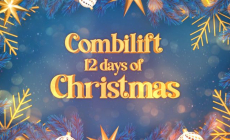-
DATA ANALYSIS – THE FOUNDATION OF EVERY PEAK SEASON - December 5, 2025
-
Creative education specialists Creative Hut give 3PL full marks for onboarding excellence - December 5, 2025
-
Unlimited Industries raises $12M to build the AI construction company that will power America’s future - December 4, 2025
-
Scottish Leather Group gets full-support solution from Rushlift - December 4, 2025
-
Etaily lands strategic investment from Japan’s SMBC – bringing total funding to $24M for Social Commerce enablement platform - December 4, 2025
-
Winners lift their LEEA Awards and raise the industry - December 4, 2025
-
Prism eLogistics and Brand Angels Partnership Gives Brands the Full Package - December 3, 2025
-
New data shows Tesla in danger of losing its way as European consideration to buy Chinese cars jumps 16% in 12 months - December 3, 2025
-
QUECLINK DEVELOPS SATELLITE-ENABLED VEHICLE TRACKING FOR UNINTERRUPTED TRANSPORT MANAGEMENT - December 3, 2025
-
Ocado Ads partners with Epsilon for people-based precision - December 3, 2025
How Trucks Are Leading The Autonomous Vehicle Revolution In The Logistics Industry.
With the rise of self-driving vehicles, it starts with logistics, trucking, and freights. In fact, trucks deliver 70% of the United States freight by weight, which is about $700 billion worth of cargo every year. After Google’s autonomous vehicle crash in Mountain View, critics have jumped to the conclusion that autonomous vehicles are deemed unsafe in the logistics industry. However, they’ve forgotten to mention that Google’s Auto vehicles have driven over 1.4 million miles – without a single accident.
On-the-job vehicle crashes cost employers up to $25 billion per day, according to the CDC Foundation. In fact, 90% of highway accidents are a result of poor attention and behavior from drivers. Since drivers are responsible for a majority of accidents across the globe, it’s not hard to determine that replacing a human with a computer may reduce the number of incidents and improve road safety.
A solution to the driver shortage
The Center for Automotive Research predicts self-driven vehicles to reach over 50% in sales by 2040. But how is this determined? Due to the significant shortage of truck drivers across the country, the demand for road fright deliveries continues to rise with the trends of online shopping and the cost of employing a driver. Autonomous trucks can reduce the costs of labor, continue operation 24/7, and save fuel. Not to mention, it has the potential to become more efficient than human-driven trucks.
However, the advent of automated driving technology will not be ready to handle 100% of driving tasks and conditions. Instead, developers are working to build a future where automation and human drivers work hand in hand to transport freight safely and more efficiently.
Advantages of AGV in the warehouse
Any logistics company that works its factory floors for over 8 hours a day will enjoy the instant savings and other advantages of autonomous vehicles, such as:
- Reduced costs of labor – the AGV system knows where products are located to save on effort and costs in a time-bound environment.
- Flexibility – AGV can be installed into existing facilities with minor modifications of storage systems or structure. This can accommodate physical changes as well as the order of assigned tasks.
- Consistency – the capabilities of AGV can be customized to meet the operational needs and environment of your production
In truth, there are thousands of trucking jobs with a demand to fill them. Automation can help connect the bridge between tech and human drivers, creating another economic incentive to push self-driving tech that can boost productivity.

































